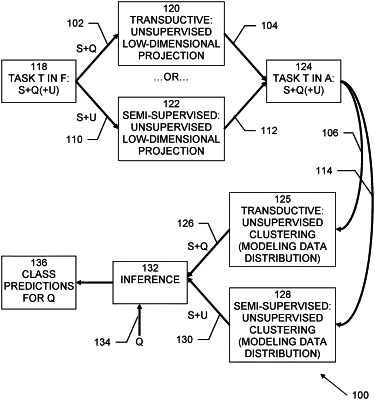| CPC G06N 7/01 (2023.01) [G06F 16/55 (2019.01); G06N 20/00 (2019.01); G06V 10/762 (2022.01); G06V 10/764 (2022.01); G06V 10/774 (2022.01)] | 17 Claims |

|
1. A method, implemented in a computer system comprising a processor, memory accessible by the processor, and computer program instructions stored in the memory and executable by the processor, the method comprising:
training a machine learning system to classify features in images by:
generating a sample set comprising one or a few labeled training samples and one or a few bulk query samples that are used as unlabeled samples or one or a few unlabeled samples for which predictions are not needed, and wherein the generated sample set is Gaussian,
performing dimensionality reduction computed on the samples in the sample set to form a dimension reduced sub-space, wherein the dimensionality reduction is performed by finding dimensions of maximal variance,
generating class representatives in the dimension reduced sub-space using clustering, wherein the clustering is performed using Mean-Shift Propagation processing; and
classifying features in images using the trained machine learning system.
|